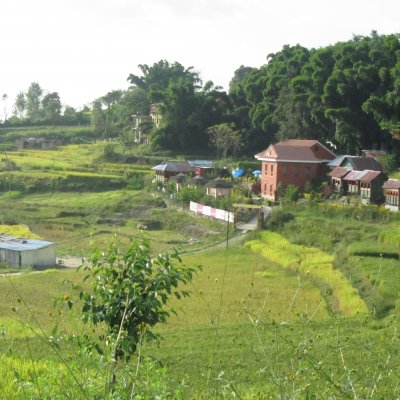Biochar – black fertiliser for green growth
A fruitful NDF-backed project in Nepal has demonstrated how charcoal fertiliser made from waste biomass can greatly increase farmers’ yields in regions where conventional manufactured fertilisers are a costly luxury.
A workshop organised by NDF in Helsinki on August 22nd spotlighted the many benefits of biochar, aiming to increase donors’ interest in supporting the replication and scaling up of successful work done in Nepal, where an NDF/Asian Development Bank project has piloted the small-scale low-cost production and use of biochar fertiliser through extensive field trials run in various agro-ecological regions with local crops.
Hans-Peter Schmidt of the Ithaka Institute for Carbon Intelligence, who also chairs the European Biochar Foundation, worked as a team leader on the project in Nepal on behalf of British consultants Landell Mills. “Biochar, which is essentially charcoal, can be made with many kinds of biomass feedstock, from wood and bulky harvesting residues to organic wastes such as rice husks,” he explained. In Nepal the project particularly found that harmful invasive Eupatorium weeds, known locally as “forest killer”, could be viably collected, dried and burnt to make carbon-rich biochar – converting a problem into an asset.
In a demonstration at the workshop in Helsinki, Schmidt showed how biochar can be quickly made from twigs and branches in a simple cone-shaped metal Kon-tiki flame curtain kiln, designed to enable feedstock to burn at high temperatures with low oxygen levels to form biochar. “In Nepal we also trained farmers to dig soil pits that can be lined with clay and used in the same way, as natural kilns,” he added. In such cases farmers only need to invest their time and effort to adopt the technology, with no financial costs.
The comparative field trials run in Nepal showed that farmers using crushed biochar instead of costly imported fertilisers achieved much greater yields in both degraded and fertile soils for typical local crops including pumpkins, tomatoes, maize, chili peppers and cabbage – especially when the biochar was soaked in readily available nutrient-rich cow urine before adding it to soils. “This is because the highly porous biochar can soak up many times its own weight in liquid, and gradually release its nutrient content into the surrounding soil,” explained Schmidt.
Using waste biomass and livestock urine in this way leads to environmental benefits including reduced emissions of nutrients and greenhouse gases, while the biochar itself represents a valuable carbon sink, since it only degrades extremely slowly. For farmers the most welcome benefits are bumper crop yields and savings on fertiliser costs. In some localities it was realised that the heat generated while making biochar could be profitably utilised for other processes such as extracting essential oils from local plants.
“The biggest challenge now is to find how to scale up the use of this appropriate technology after the successful field trials,” said project director Simon Foxwell of Landell Mills. “The Nepali authorities have been impressed by the trials, and they are keen to train more farmers. Practical brochures and leaflets have now been produced for local farmers, but there is still a need for support from donors for more extensive field trails across Nepal. We also believe that the lessons learnt from Nepal will help with the replication of this kind of project in other countries.”
More information
Asian Development Bank, Mainstreaming Climate Change Risk Management in Development
The biochar work of the Ithaka Institute
Landell Mills


